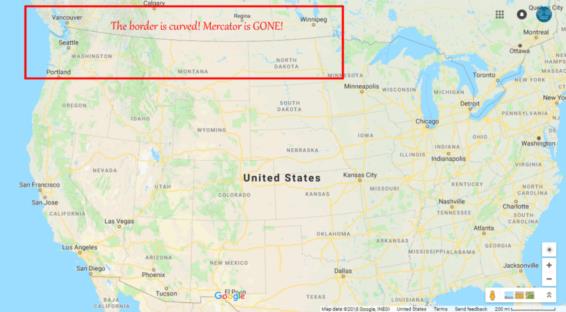
NavList:
A Community Devoted to the Preservation and Practice of Celestial Navigation and Other Methods of Traditional Wayfinding
From: Frank Reed
Date: 2018 Aug 9, 19:42 -0700
A decade ago, Google set the clock back in cartography by adopting the hideous map projection known as the "Mercator projection" as the basis for its online mapping service. It has since propagated to nearly every corner of the online world. It was a shocking thing for folks who understood mapping and cartography when Google made this choice since Mercator was nearly dead by the beginning of the 21st century except in certain antiquated communities trapped by what we might call "installed base", specifically the massive inertia of nautical charts in some cultures.
A few days ago I popped into Google Maps. and zoomed out a bit to a broad view of the eastern US. As I did so, the service drew in some quick lines before filling the map, and those lines were curved. Curved lines! I couldn't believe it! Sure enough, Google Maps is now using the standard "bird's eye view" projection, or if you prefer, "astronaut's eye view" of the globe. This is a vast imrovement, and it should rapidly accelerate the disappearance of the Mercator projection in the majority of applications. Show's over. It's done. Our long cartographic nightmare is drawing to a close...
Truth is, we've had nearly a generation of digital Mercator maps in un-necessary contexts (essentially all contexts), and they will be with us for at least five years, which is a long time-horizon in the internet world. So the show isn't quite over... but folks are folding up their blankets and running for the parking lot.
Here's a little press coverage: https://www.theverge.com/2018/8/5/17653122/google-maps-update-mercator-projection-earth-isnt-flat.
Frank Reed
Clockwork Mapping
Conanicut Island USA







